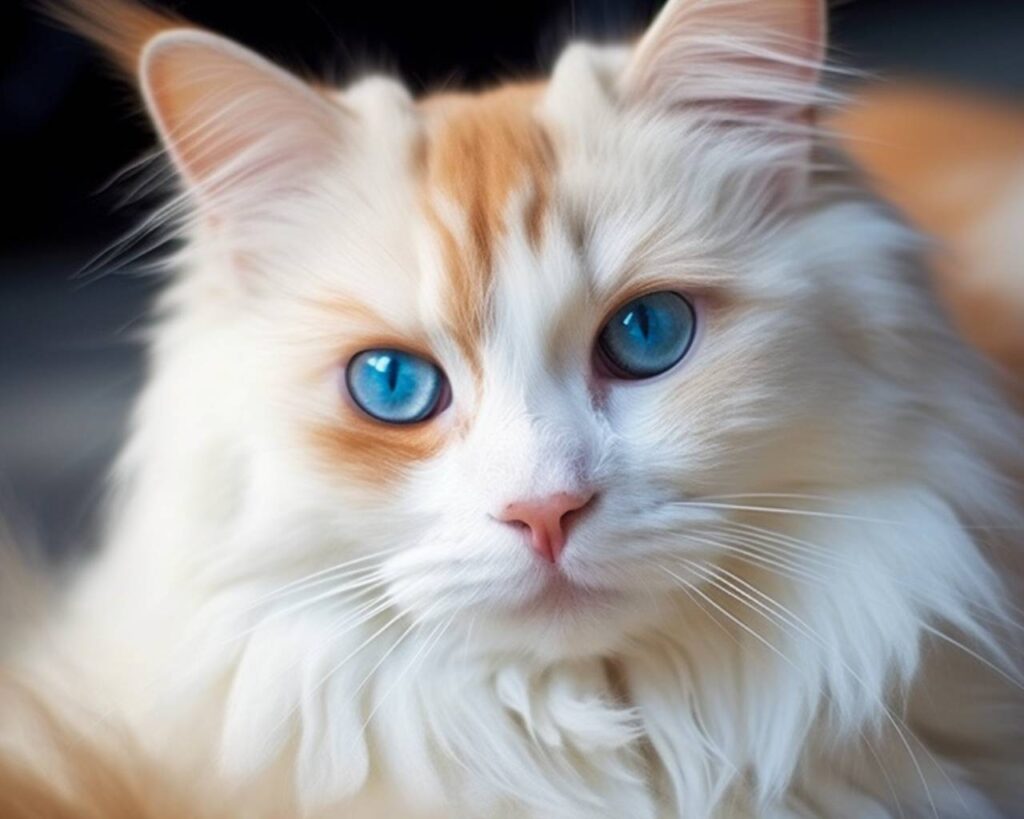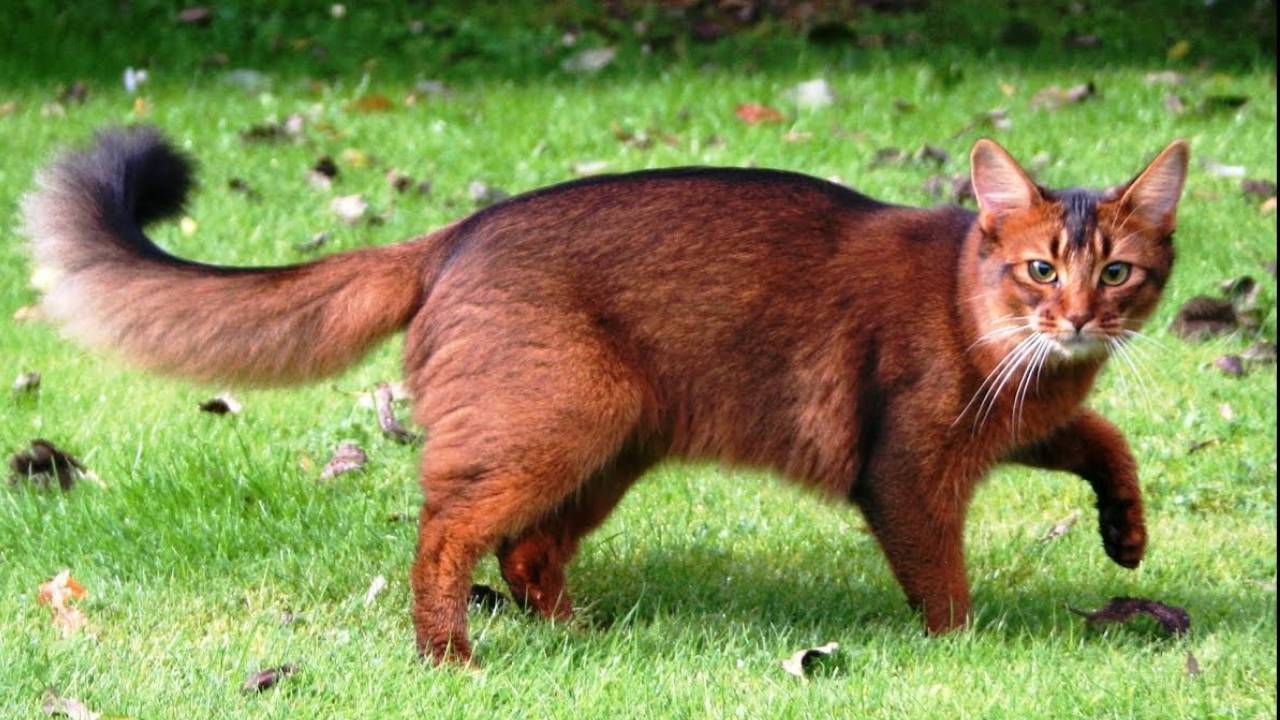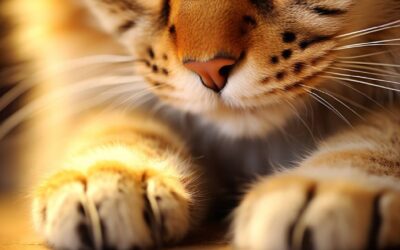A cat’s mesmerizing gaze is as mysterious as it is beautiful. Its most captivating features are its varied eye colors, ranging from deep gold to striking blue.
The color of a cat’s eyes isn’t just a cosmetic trait; it’s a window into their genetic makeup and can give clues about their health. This article explores the spectrum of cat eye colors, detailing each from the most common to the rarest and providing insights into what these colors mean for our feline friends.
Allure Feline Eye Colors
Eye color in cats is a direct result of their genetics. The genes responsible for coat color also play a significant role in determining eye color. It’s fascinating to see how variations in these genes create the spectrum of eye colors observed in cats.
Additionally, while most eye colors do not typically indicate health problems, changes in eye color can be a sign of health issues and should be checked by a veterinarian.
1. Yellow
Yellow eyes in cats are not only common but a hallmark of the feline world. This eye color can range from a light, lemony shade to a deep, sunflower yellow.

Cats with yellow eyes are often bursting with personality and are found in numerous breeds, including the playful Abyssinian and the majestic Maine Coon breed. The pigment responsible for this eye color is pheomelanin, which also affects coat color.
If you’re considering adding a kitten to your family, explore our kittens for sale.
2. Green
Green is another color commonly found in cats’ eyes. This color can vary greatly, encompassing light minty hues to deep forest greens. Cats with green eyes are often associated with mystery and allure.
The Russian Blue and the Egyptian Mau breed, known for their enchanting appearance, typically sport this eye color. Green-eyed cats are generally healthy, although it’s always wise to monitor any changes in their color or clarity.
3. Golden
Golden eyes in cats exude a regal and wild essence, often resembling those of their larger, wild relatives like lions and tigers. This eye color is especially striking on cats with darker fur. Breeds such as the Bombay breed and the black domestic shorthair often display this stunning feature. Golden eyes result from a high concentration of both melanin types, giving them a luminous, almost metallic look.
4. Blue
Blue eyes in cats are a breathtaking feature, often associated with specific breeds like the Siamese or Turkish Van cat breed. The blue color is due to a lack of melanin in the iris.

While incredibly beautiful, blue-eyed cats are not more prone to health issues, certain breeds with this eye color may have specific genetic health considerations. These cats are often perceived as more sensitive and calm than their multi-colored peers.
5. Orange
Orange eyes in cats are less common and can appear almost magical. This intense and vivid color is found in breeds like the British Shorthair. The depth of orange coloration is usually a sign of excellent health and vitality in a cat.
Owners of orange-eyed cats often report a spirited and engaging temperament in their pets.
6. Copper
Copper eyes are a deeper iteration of orange, rare in the feline world. This eye color radiates an intense, almost otherworldly glow, often seen in breeds like the Persian. Cats with copper eyes are usually well-bred and may come from a lineage with strong genetic traits.
7. Odd-Eyed (Heterochromia)
Heterochromia is a fascinating condition in which a cat has two different-colored eyes, typically one blue and one of another color. This trait can occur in any breed but is often seen in the Turkish Angora.
Cats with heterochromia are striking in appearance and perfectly healthy despite the myths that might suggest otherwise.
8. Hazel
Hazel eyes are a mix of green and brown and can change color based on the lighting. This eye color is charming and less common than pure green or yellow. Cats with hazel eyes, such as those from the American Shorthair breed, are known for their docile and affectionate nature.
9. Amber
Amber eyes in cats are a soft, golden hue that is both rare and beautiful. This eye color is subtle compared to the vibrant oranges and golds but carries an undeniably captivating elegance.

Cats like the Somali often display this eye color and are known for their playful and friendly nature.
10. Pale Blue (Almost White)
The rarest cat eye color, pale blue, which can appear almost white, is stunning and unique. This eye color is often associated with breeds such as the Ojos Azules breed. While breathtaking, cats with very light blue eyes must be monitored for vision problems, as the lack of pigment can sometimes correlate with health issues.
The Science Behind Cat Eye Colors
The pigment melanin plays a pivotal role in determining the color of a cat’s eyes. Melanin is responsible for skin coloration, fur, and looks in humans and animals. In the case of cat eyes, the melanin concentration in the iris gives rise to the stunning hues we admire.
Breeds like Bombay and the British Shorthair are known for their captivating eyes with high melanin content.
Conversely, cats with low melanin content in their irises may exhibit stunning blue or green eyes. Due to the low concentration of melanin, light scattering in the iris creates the mesmerizing effect we associate with these colors. The Siamese cat’s striking blue eyes are a prime example of this enchanting phenomenon.
Cat Genes And Its Associated Color Codes
Genes are the architects of cat eye colors, shaping the expression of melanin and determining the final color palette. Each cat inherits a unique combination of genes from their parents, creating a captivating symphony of colors.
The OCA2 Gene
The OCA2 gene is a crucial player in cats’ formation of blue eyes. When this gene is active, it restricts the expression of melanin, leading to the characteristic blue color. Breeds like the Ragdoll carry the OCA2 gene, endowing them with striking blue eyes.
The ASIP Gene
The ASIP gene, also known as the Agouti signaling protein gene, plays a crucial role in regulating the distribution of melanin in the iris. Its presence creates mesmerizing patterns and variations in eye colors, adding a touch of artistry to a cat’s gaze.
Combining the above and other genes results in the feline world’s delightful diversity of cat eye colors.
Warning Signs & When to Seek Help
Cats can develop eye infections, allergies, or injuries that may affect their vision and overall well-being. Changes in your cat’s eye color, cloudiness, excessive tearing, or squinting can indicate underlying health issues.
If you notice any concerning changes in your cat’s eyes, such as persistent discharge or significant changes in eye color, you must consult a veterinarian promptly. Early intervention can prevent further complications and improve your cat’s quality of life. Protecting your pet with cat insurance can help manage the costs of these health visits.
As cat lovers, we are fortunate to witness this extraordinary range of eye colors that enriches our bond with these wonderful creatures. So, the next time you gaze into a cat’s eyes, take a moment to appreciate the depth and wonder within, for it is in these windows that the true soul of a feline lies.

FAQs
Can a cat’s eye color change naturally over its lifetime?
In most cases, a cat’s eye color remains consistent after fully developing in the kitten stage. However, subtle changes can occur due to aging or health issues. A veterinarian should check for significant changes in eye color in adult cats as they could indicate a health problem.
How do kittens’ eye colors change as they grow?
Kittens are born with blue eyes due to the initial lack of melanin. Melanin develops as they mature, typically around 6 to 8 weeks, and their true eye color emerges. This color change can continue until they are about 3 months old when their permanent eye color is usually established.
What does it mean if a cat’s eyes suddenly turn a cloudy blue?
A cloudy blue appearance in your cat’s eyes could indicate cataracts or other eye health issues. It’s important to seek veterinary advice as soon as possible to diagnose the cause properly and receive the right treatment.
How can I maintain the health of my cat’s eyes?
Regular check-ups with a veterinarian are crucial. At home, you can monitor your cat’s eyes for any signs of discharge, redness, or changes in appearance. Keep your cat’s face clean, particularly breeds with shorter noses where tears can accumulate. Ensure your cat has a balanced diet rich in vitamins and minerals to support overall health, including eye health.
Are certain eye colors associated with specific cat behaviors?
No scientific evidence links specific eye colors to particular behaviors in cats. Cat personality traits are more influenced by breed, upbringing, and individual temperament rather than eye color.






I never realized how many different eye colors cats could have! My cat has these beautiful green eyes and now I know it’s quite special.
👍